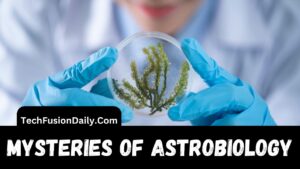Astrobiology: Examine the Search for Extraterrestrial Life and the Scientific Exploration of the Potential Habitability of Other Planets and Moons

Introduction:
Embarking on the cosmic journey of Astrobiology opens doors to the vast universe, where the pursuit of extraterrestrial life and habitable celestial bodies has fueled scientific exploration. From the depths of space to the possibilities on other planets and moons, this article navigates the captivating realms of Astrobiology.
The Cosmic Quest: Unveiling Extraterrestrial Mysteries
Defining Astrobiology
Astrobiology, the amalgamation of astronomy, biology, and chemistry, endeavors to unravel the existence of life beyond our planet. This interdisciplinary field explores the potential for extraterrestrial life and scrutinizes the conditions fostering habitability.
Exploring Alien Worlds
Venturing into the cosmos, scientists employ cutting-edge technologies to study exoplanets and moons, assessing their atmospheres, compositions, and potential for hosting life. These investigations provide valuable data in the quest for extraterrestrial life.
The Role of Astrochemistry
Astrochemistry plays a pivotal role, examining molecular compositions in space. By studying chemical processes in cosmic environments, scientists gain insights into the building blocks of life, offering clues about potential habitability.
Probing the Habitability of Celestial Bodies
Mars: The Red Planet’s Potential
As a focal point in Astrobiology, Mars captivates researchers with its similarities to Earth. Delve into the investigations and rover missions, as scientists analyze Martian landscapes, seeking signs of past or present life.
Ocean Worlds: Moons Beyond Earth
Journey to the moons of Jupiter and Saturn, such as Europa and Enceladus, where subsurface oceans spark intrigue. Scientific endeavors aim to unveil the mysteries concealed beneath icy crusts, exploring the potential for life in extraterrestrial oceans.
Goldilocks Zone: The Habitability Sweet Spot
Explore the concept of the habitable zone, where celestial bodies orbit at a distance conducive to liquid water. Discover how this ‘Goldilocks Zone’ is a key factor in assessing a planet’s potential to sustain life.
Astrobiology:
Extraterrestrial Life: Beyond Earth’s Boundaries
Dive into the search for alien life, examining microbial life forms to complex organisms. Learn how the discovery of extremophiles on Earth expands the possibilities of life thriving in diverse and extreme environments.
Tools of Astrobiological Exploration
Survey the technological arsenal employed in Astrobiology, from powerful telescopes to rovers equipped with advanced analytical instruments. These tools enable scientists to explore celestial bodies, analyze samples, and gather critical data.
The Interplay of Science and Science Fiction
Explore the influence of science fiction on Astrobiology and the public’s perception of extraterrestrial life. Uncover how imaginative narratives contribute to scientific curiosity and inspire advancements in the field.
FAQs – Unveiling Insights into Astrobiology
Q: How do scientists search for extraterrestrial life? A: Scientists use telescopes, probes, and rovers to analyze atmospheres, compositions, and surface features of celestial bodies, seeking signatures of life.
Q: What is the significance of the Goldilocks Zone in Astrobiology? A: The Goldilocks Zone represents the optimal orbital distance where a planet’s conditions are suitable for liquid water, a key factor in assessing habitability.
Q: Can extremophiles on Earth provide clues about extraterrestrial life? A: Yes, the discovery of extremophiles expands the scope of potential habitats for life beyond Earth, showcasing the adaptability of organisms to extreme conditions.
Q: How does astrochemistry contribute to Astrobiology? A: Astrochemistry studies the chemical processes in space, shedding light on the building blocks of life and providing insights into the conditions required for habitability.
Q: What role do oceans on celestial moons play in Astrobiology? A: Moons with subsurface oceans, like Europa and Enceladus, are of particular interest as potential habitats for life, with ongoing missions aiming to explore these extraterrestrial waters.
Q: How does science fiction influence Astrobiology research? A: Science fiction fosters curiosity and creativity, influencing scientific exploration by sparking ideas, hypotheses, and inspiring technological advancements.
Conclusion:
Astrobiology invites us on an extraordinary journey, blending scientific rigor with the allure of the unknown. As we navigate the cosmos in search of extraterrestrial life and habitable worlds, the quest continues, driven by curiosity, innovation, and the human spirit.
Also, Visit:
